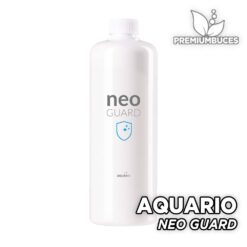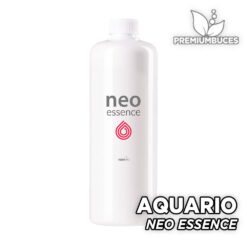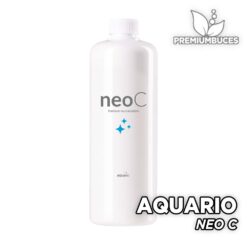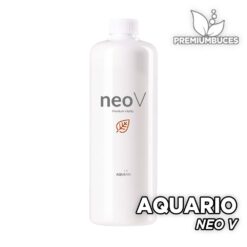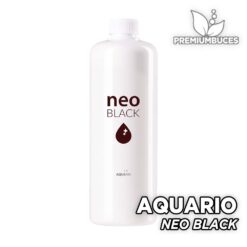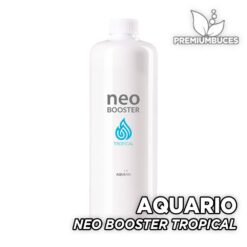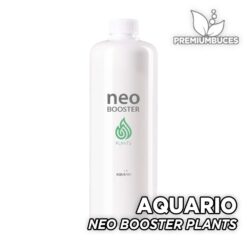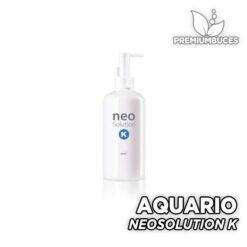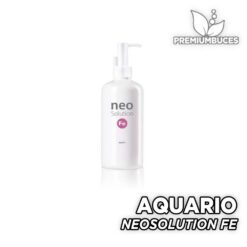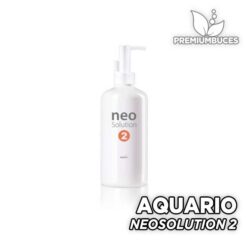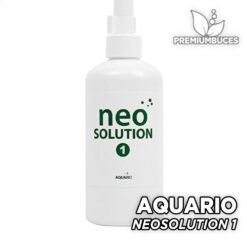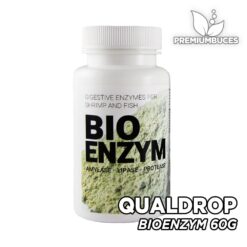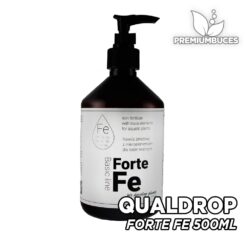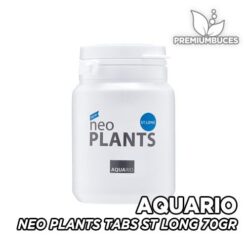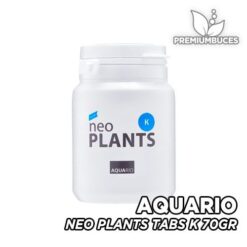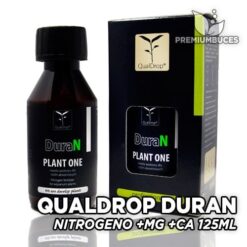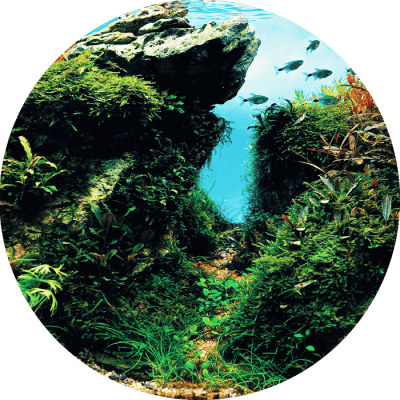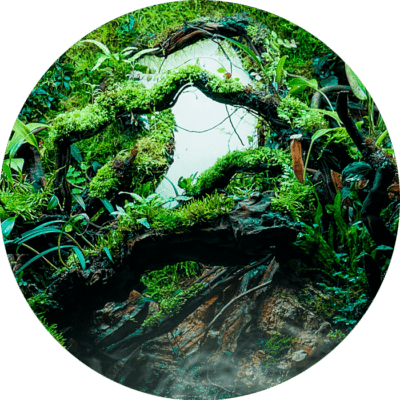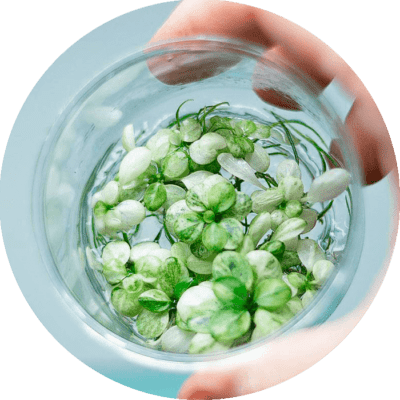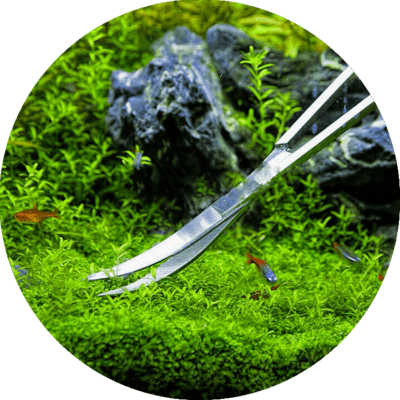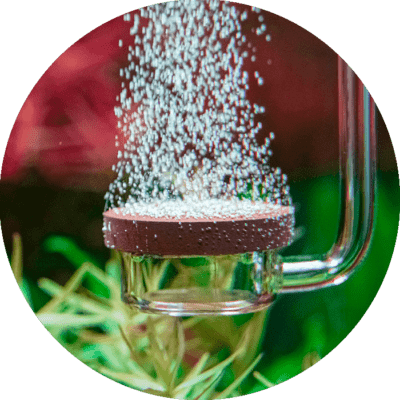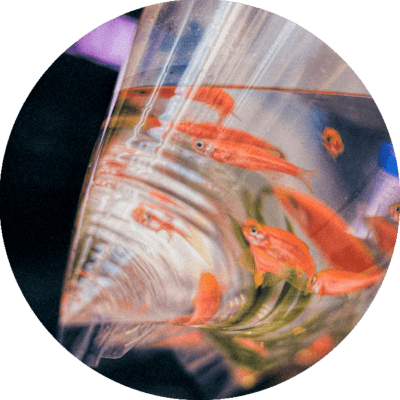Today in the blog of Premium Divers let's talk about all Possibilities that exist when mounting a planted aquarium.
It often happens, especially when people are setting up an aquarium first and they are not experts, who feel a great burden amount of care, time and money It seems that you have to spend to have a pretty, healthy aquarium and where life passes normally.
It is true that, as we always mention, it is important to take care of and pay attention to our aquarium. You have to be careful that everything goes well for the fish, and also for the plants that accompany them underwater. But when we are starting we have to go little by little, with tranquility and simplicity: this is how we will get the quick trick to keep our aquarium perfect, and we can now investigate slightly more complicated formulas.
One of the topics that brings us the most head at the beginning is that of chemical parameters in water, about which you can read more if you click on this link, and specifically that of the need for C02 so that the plants in our aquarium are well. Is it possible to have plants that do not need, at least as thoroughly, the use of C02 to grow healthily?
Well yes, it is indeed possible, and there is some types of plants that grow quickly with almost no need, and that they will be your perfect allies at the beginning.
PLANTS: ESSENTIAL PARTNERS IN THE AQUARIUM
Many people believe that the reason why the vast majority of aquariums that we see in homes, in stores or in informational videos on the internet, they have plants it's for one purely aesthetic question.
It is true that this is a compelling reason, and it is that for fans of the aquarium world, can draw a landscape underwater in our own home is a challenge. In addition, they get authentic works of art, with plants that make a perfect set, which fill every corner of the aquarium and turn the fish habitat into something to admire for hours.
But the presence of the plants is not only because they are beautiful, but because your company is essential for the health of the water and its main inhabitants: the fish.
THE HELP OF PLANTS IN THE CYCLING OF THE AQUARIUM
We have already told you about the aquarium cycling process, something absolutely mandatory to start setting up our private aquarium: the remains and waste that are formed in water naturally, produce ammonium which is very toxic to fish. That is why it is important to go through this process that lasts a few weeks, and which consists of help the aquarium's biological filter to convert this ammonium into other chemical compounds such as nitrate and nitrogen, which is compatible with the life of our fish.
El biological filter manages to carry out this process thanks to the help of two types of different bacteria that they should start living in it, and that feed on ammonia, converting it to nitrate and then nitrogen. It is important, since we are telling you this, that you get a quality biological filter, like the ones you can find in our online store.
Well, fish need a aqueous environment with more nitrogen than any of the other chemical compounds, but nevertheless the aquarium plants prefer nitrate y help in the process of converting this into nitrogen. Thus, plants are the right hand biological filter, and they will help us keep water quality at the top, and that all life under it passes successfully.
OTHER FACTORS WHY THE PRESENCE OF PLANTS IS POSITIVE IN THE AQUARIUM
There are many other reasons by which the presence of plants is essential in our aquarium, and we are going to tell you some of them:
- In addition to the prominence that plants have in the aquarium cycling, there are other chemical processes in the aquarium water in which they participate: when there are plants in the aquarium and they perform the photosynthesis by giving them the sun, produce oxygen, which is absolutely critical for the fish to be well.
- The presence of plants in the aquarium are also important for some fish activities: some species of these seek slightly more leafy places to breed, or to protect future offspring. To this is added that there are also other species that like spending time between branches and shady areas of the aquarium for its predatory nature.
- The presence of plants and mosses is especially important if the inhabitants that we are going to have in the aquarium are shrimps. They need to avoid stress and live comfortably, the presence of leafy areas to hide and lay the eggs after breeding.
- Plants also help to avoid presence of one of the most common and annoying aquarium problems, which are the seaweed. Although a few algae may not be a huge problem, the truth is that if they are invasive they will reproduce with dizzying speed, dirtying our aquarium and making it difficult to see it from the outside. Plants help precisely to eliminate the possibility of them appearing.
- There are some studies on aquarium waters, like the one performed in the book "The aquarium: decoration and plants" from the author JM Schutz in which he speaks that after many tests in different aquariums, there is a Direct relation which establishes that aquariums where there are more plants, fish get less disease.
- Finally, and also speaking about the aesthetic issue, plants help us to give a feeling of reality to our aquarium: with them you can cover the appliances that are necessary to measure the parameters of the water, or the biological filter, and cause a vision of a much more natural place, in our own home.
THE IMPORTANCE OF CONTROLLING THE WATER PARAMETERS
We have already talked to you in other posts about the importance of being aware that the water parameters are adapted to the needs of the fish and plant species that we have in our aquarium. If you want to know more about this topic, you can read this article on what are the most important parameters and how to measure and keep them under control.
There are, as we have in that article, many differences with respect to the measurements of the water parameters according to the species of fish or plants that we have. There are fish and there are plants that are much more Customizable to any kind of measurement parameters, and others that are more sensitive and that they need water characteristics that are as similar as possible to those they had in their natural habitat.
However, there are general limits for all fish and plant species, and these are the ones that we should not under any circumstances neglect. For example, if we talk about PH of the water, which is basically the alkalinity or acidity of the water in our aquarium (and which is always related to the pH of the water in the city or the place where we live), there are some fishes they need a very alkaline water, and others who live well in a harder water, but there is a minimum level that it should not be lowered for any reason, which is the 6.
A PH level lower than 6 will mean that the water is so acidic that it will endanger any species that lives under it, be they plants or fish, and that this will also influence the bacteria that inhabit the biological filter, will disappear, and all the chemical parameters of the water will become unbalanced, directly causing the illness or death of living things from our aquarium.
With all this, what we want to say is that in today's article we are going to talk about which plants have a greater capacity to adapt to parameters at low levels, of which we hardly have to worry, but that this it will never mean that we can neglect the lowest levels, since these are going to cause real havoc in the life of our aquarium.
CO2 AND ITS ROLE
El CO2 or carbon dioxide is one of the most popularly known chemical parameters, along with the oxygen. This is because it is one of the key elements in the photosynthesis process, through which plants generate oxygen that help the rest of the living beings on the planet to be able to live.
They produce oxygen thanks to the sun, and also thanks to the fact that they feed on carbon dioxide for it. Carbon dioxide, in turn, is a compound that other living beings generate when we breathe. Plants also produce a little carbon dioxide that they have left over from the day at night, when they no longer have the effect of the sun on them.
Well, what for the plants grow and perform all those functions for which we want them to be co-inhabitants of our aquariums, need carbon dioxide or CO2. That is why many aquarium specialty storesas Premium Divers among others, they sell products to ensure that our aquarium has the necessary CO2 so that the plants are well.
If you click on this linkcan you find some CO2 diffuser elements, and fertilizers for plants that are high in CO2. We also have some other products that serve to measure how much CO2 the aquarium has, which is interesting to be able to explain why the plants are growing too slowly, or are growing at normal speed.
Today the vast majority of people who are dedicated or want to dedicate themselves to the world of aquariums, think that to have healthy plants is completely mandatory to have a CO2 system. But this is not entirely true, since it all depends on the type of plants that we want to cultivate.
If, indeed, we want plants that are especially sensitive and that require a lot of Co2 and a lot of care for their correct growth, then we will have to get hold of CO2 elements like the ones we mentioned earlier.
However, as we have already told you at the beginning of the article, we recommend that if it is the first time in your life that you set up an aquariumyou should try simplify everything a lot: you will have to be aware of the aquarium cycling, as well as the needs of your first times. So why not try simplify the task of caring for plants?
It is really possible to have a beautiful and healthy planted aquarium without having to add the Co2 system at the start. Carbon dioxide will never be left over, that is, having it will always be positive for the plants, but there are a number of species of them that are much less demanding, who grow easily without large requests and that they will be your perfect companions so that you cheer up in your first aquarium, and you can worry about the other parameters and the health of your fish.
TYPES OF PLANTS THAT CAN BE CULTIVATED WITHOUT CO2
Next, we are going to show you a list of plant species that can be grown without the obligation to use a CO2 system. In addition to not needing CO2, they are plants that, in general, they are very resistant, and therefore do not need a very powerful lighting system and it is worth with a basic one, they can live and grow healthily in any kind of water (with the parameters that are, adapted to the fish more than to them that will be satisfied with whatever water it is) and without a complex subscriber system.
We are going to tell you that list of plants suitable for beginners in the world of aquariums, or to anyone who wants a simple aquarium and pretty without getting too complicated:
ANUBIAS: PLANTS WITH MANY SUBSPECIES, CAPABLE OF ADAPTING TO EVERYTHING
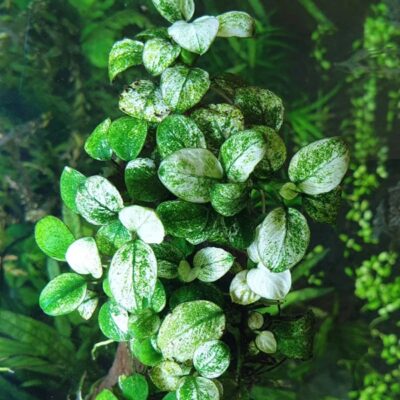
We open the list with this kind of aquarium plant, Which is the most common and the most used of all that exist. In fact, in our blog we write an article telling you everything you need to know About this very easy and adaptable plant aquarium, which you can read if you click here.
All the plants of the genus Anubia have their origin in africa, specifically in the west of the continent. They are a type of plant of the most resistant of the entire planet, capable of survive and grow quickly in any type of environment. You can see it in waters with very cold or very warm temperature, in areas with a lot of lighting or with a darkness total, as well as in waters very alkalineVery acidic, with too much oxygen or too little, with more or less ammonium, more or less chlorine, with a huge amount of phosphates in water or any other mineral that are included in the most important of the water parameters.
This gives us a huge advantage, which is that we can focus on the selection of fish that we want, and adapt the water features from the aquarium to what they need, without having to worry about Anubia needs be others. However, as with everything in life, Anubia needs a few minimal care, and above all be attentive to any problem that may arise in its growth, and that makes us have to intervene.
These are some of the characteristics of Anubia, as well as the few causes that can cause problems in your health:
- All the Anubias are a slow growing plants, but constant. If we buy them and see that they take longer than we expected to come out ...Do not worry! Nothing happens to them, simply they need your time.
- Depending on the lighting that we have in the aquarium, Anubias can have one form or another. How much more bright be the aquarium lighting, leaves will grow faster and narrower. However, if we have a soft lighting, growth will be slower, although always constant, and leaves will be wider. This is something that is indifferent to the well-being of the aquarium, but something you can take into account if you see changes in their way of growing, or if you have preference by any of these ways.
- All the Anubias They do not need no type of extra fertilizer for their growth. They alone will be enough if we have the clean enough water and healthy aquarium environment.
- La Anubias root not buried in the substrate, as is the case with the vast majority of aquarium plants. They have a marked main root, wider than the others, which must be attach to a decorative element of the aquarium, such as a rock or a log. You can fix it with the help of thread. This is a quite relevant data, as if you bury the rhizome, you may cause one of the few situations where the plant will die.
- As with all aquarium plants, you have to keep an eye out for leaf predators. It is not something that you have to worry about excessively, but it is something to be aware of: for example, there are some fishes, As the Goldfish, which will eat your leaves, and if they are still growing, they can cause the plant to not finish growing well. It is also important to monitor that there is no snails in them, for the same reasons. On the presence of snails and possibilities to remove them if they have become a pest, you can read in this article from our blog.
- Also like all other aquarium plants, they help us to avoid the presence of invasive algae, but at the same time they can be the first victims of this. If you observe that the leaves of your Anubias do seaweed, you should wash them with plenty of water clean every time you clean the entire aquarium, which is usually every ten days or two weeks.
In general, if you ask us which plant would we recommend so as not to have to be too aware, and have time to monitor the entire aquarium in general when you do not have too much experience, we recommend that you try the Anubias. They will grow fast and well, and that it will motivate you to set yourself new challenges.
JAVA MOSS, ALSO KNOWN AS DUBYANA VESICULARIA

It is not the first time that we speak to you in the blog about him Java Moss, One best companions for our fish in this particular waterscape that we will have at home. In fact, here is an article in which we explain in detail what they are the best mosses to put in the aquarium.
El moss is an ideal choice for aquariums, especially if they are Beginners. They have one very particular physiognomy because they have no roots y grow on any surface where there is moisture, and also where there is shady area.
As we have told you on the blog, mosses are hermaphroditic, grow by spores and they do not have as a result of their reproduction no kind of seed. Thanks to this so particular reproduction is that they do not need to be buried in any substrate, and therefore do not need particularly difficult conditions, nor help from no CO2 apparatus.
Within all the amount of mosses there is, Java Moss it is proclaimed as a favorite of virtually any hobbyist to aquariums. We always recommend it for the first aquarium, but the reality is that many people who have been on the subject for a long time and they have experience, they use it the same for your aquariums. Do you want to know the reasons why Java Moss is so interesting for your aquarium? Here we tell you!:
- El Java Moss extends upholstered, that is, in a way more horizontal than vertical and covering any surface that reaches as if it were a blanket. This gives you the isolated landscape look, natural and beautiful that we often look for in the aquarium.
- El Java Moss, and this is the main reason why it is included in this list, demands practically nothing: it will not need no compost, no care nor any extra product to grow healthy. What's more, will not need C02 to grow, which is what makes it more attractive within the subject we are talking about.
- La temperature that is usually recommended for Java Moss va from 15 degrees Celsius to 28. This is an enormously varied fork, within which almost all species of plants and fish enter that can be in an aquarium. So the Java Moss is optimal companion for any type of fish, or other plants that you want to have.
- Their presence in a shrimp aquarium, or with small fish that seek to hide in leafy places within the habitat.
- To place it in the place we want in the aquarium we simply have to anchor or fix it to a decorative element, in the same way that it happened with the Anubia.
- El Java Moss grows with very fast and easy. It is a type of moss very motivating for the first time, because the results are immediate and will motivate the person who has it to continue worrying and thinking of new ideas for the aquarium.
In conclusion, the Java Moss is a also perfect option, with which you will not have to worry about parameters of the C02 in the aquarium, which will also help you with the balance of other parameters such as nitrogen. To finish we will tell you the only thing that you will have to take into account about the Java Moss, and that is that the only thing that bothers him is the excessive light: this will probably cause you excess algae, and it will not do you good to continue growing.
ELODEA NAJAS, TECHNICALLY CALLED EGERIA DENSA
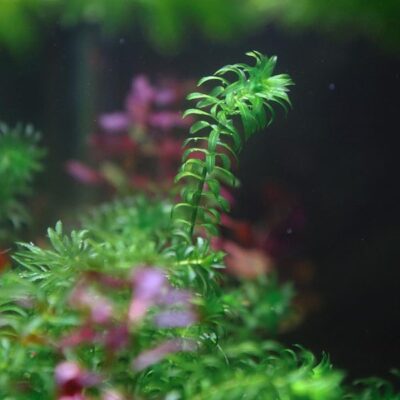
In this post about all possible plants that we can have in an aquarium without a CO2 system, we must necessarily talk about the Elodea: this is one quite particular species, because it is commonly recognized as a invasive plant and under no circumstances should it be included in no natural setting, because it will end with species in the area. But this is not a natural space, but our own aquarium, and for this it is a perfect choice.
The origin of the Elodea Najas is United States, although this spread all over the world and it is very easy to find it in any store dedicated to the world of aquariums.
La Elodea Najas grows with a lot speed and ease and in practically any environment. Yes it is true that especially appreciates the warm waters and that they have enough luminosity, but these characteristics fit perfectly with the need for many species of fish one of the most common.
Their leaves are small and very numerous, and this causes an external aspect of much leafy, perfect to have it in the aquarium background, and also to cover some unsightly items, such as the biological filter, the tubes and any other system that we have in the water. It is also true that it does not have the isolated aspect that we talked about before about the Java Moss, that is, if what you are thinking about is creating a tank setup, maybe you prefer other options before the Elodea.
THE FOX TAIL, ALSO CALLED CERATOPHYLLUM DEMERSUM

La Fox tail is one of our favorite plants, and not just because it has a exotic beauty which makes it unique among almost all types of existing plants, but also because getting it to be in its maximum splendor will not cost you any kind of effort.
Its name is logically given by its particular shape like fox tail, upwards and with very fine leaves, as if they were hairs. It grows, as we say, very easily, although it does have some characteristics that we are going to briefly comment on:
- The Fox Tail has no roots, as if it were a moss, but it has small rhizomes that are very easily anchored to any surface on which they are placed. It is usually placed in the aquarium floor, with or without substrate, it grows with the same ease. The question of substrate sometimes it is not only for the plants, but also for some types of fish that are good for look for food among him: this is the case of Corydoras that they have in their nature constantly cleaning the floor looking for their food. To learn more about these curious fish, you can press here to read the article in which we tell you all about them. In any case, the Foxtail plant will grow you have substrate in the aquarium or not.
- Foxtail can also grow floating. As they have no roots and the rhizomes are somewhat finer than these, it is quite common that are released from the place where they were anchored and float. If you don't like this, you simply have to place them somewhere where they are more fixed, although in a floating way, from our point of view, they are also very beautiful.
- Another quirk of the plants Fox tails or Ceratophyllum Demersum is that being so flexible and being able to be minimally anchored anywhere, as they grow, some stems will come loose that are part of a set. The funny thing about this is that the loose stems they become when they are shed into new individuals, which grow as quickly as the previous ones.
- Finally, and although, as we have already said, foxtails are very resistant, all these ideal characteristics to grow will be especially fast and effective en soft waters, with little acidity and in a temperature between 18 and 28 degrees centigrade.
THE JAVA FERN, ALSO KNOWN AS MICROSORUM PTEROPUS
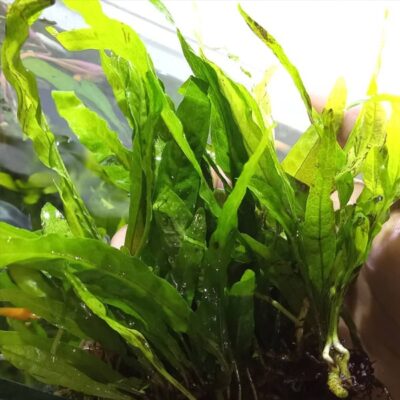
Finally, let's talk about another of the most demanded plants for aquariums in general, and for the first aquariums in the hands of beginners in particular: the java ferns.
These particular plants come from Southeast Asia, and share with the mosses of Java the adaptability they have, not needing much or little light, neither too much nor too little temperature, and also surviving on carbon dioxide or CO2 that is naturally formed in the aquarium through the respiration of the fish, that is, not needing an extra amount.
The java ferns, like Java moss, Foxtails and the vast majority of the plants that we have mentioned today in this article, it has small roots that do not need to be buried in the substrate of the aquarium, but the ideal for them is to be tied to the different decorative elements of the aquarium, such as a red one, a log and even other more artificial ones such as a sunken ship (this will give it a fanciful look that we personally like a lot).
The Java Fern is one of the busiest plants of all those that exist for the aquarium world. Its stems and leaves grow very, very close together, and this gives it a perfect look to make the aquarium background, or to place in some other area that we want to be more populated and to provide a hiding place to other inhabitants from our aquarium.
Other point very in favor to use the Java Fern in our first aquarium, in addition to the ease with which it adapts, as we said, to not having too much CO2, is the fact that it may be compatible with herbivorous fish. We have already told you that some fish eat the leaves of many of the coexisting plants, as in the case of Anubias, and this can be a serious problem especially when they are growing. It also happens if we have, voluntarily or as a plague, some snails, who feed primarily on this.
Well, it turns out that java ferns they have in their leaves a series of chemicals that are not toxic, nor do they suppose a poison, but they do repel animals from eating them. They will be able to interact with them and be close but never devour them, and that of course is to eliminate all the headaches that can be caused by choosing fish that do not want to eat the plants in the aquarium and that can live in peace.
In the same way that we have said that Anubias, Java Moss, Praise and Fox tails They are perfect plants for the beginner who forms his first aquarium and who does not want to spend or use too much effort on the subject co2 system, we say the same about him Java fern. In our online store you can find quality ferns, and also a lot care information that you have to carry out so that it grows quickly and without any problem.
TYPES OF PLANTS THAT NEED ADDITIONAL CO2
Now that we know the plants that you must make use of if you want an easy and problem-free planting, without spending money on an additional carbon dioxide system, and being able to enjoy the results quickly and easily, we are going to tell you what are the plants that will not be able to grow well without extra carbon dioxide additional.
We are not going to make you one detailed description of what all these plants are, which are many, but we are going to talk to you about two very clear examples of plants that will not be successful in an aquarium without additional CO2:
All the plants of the family, or that resemble those known cabombas, they will always need a extra carbon dioxide. The Green cabombas, also called Water cabins, They are some exotic plants highly valued in the aquascape world, or of water landscaping, due to its beautiful shape that can give it a unique aspect to our aquarium.
Yet they are a very complex plant type, what do you require a lot of cares, a very specific light and temperature, and that have special sensitivity to water parameters. This is sometimes very difficult to combine with fish that have their own needs. One type of plant related to this family is known as ambulanceEither Limnophila Sessiliflora, which is much more adapted to any water condition, it has a wide range of temperatures in which it can cope, but yes, it will need a extra carbon dioxide and therefore it cannot be one of the options that we give in our list. If you click here, you can know something more in our website about this peculiar aquatic plant.
El another example more complex plant that we will not recommend in this article, is the one that belongs to the Nymphaeas family, also called Bulb or Lotus. These are precious plants, with a peculiar shape that grows in a unique and very beautiful way. The bulb floating in water and with the help of great tricks, take root and shape your space in places normally with shallow depth.
Although it is a beautiful plant, if what we want is a type of plant that does not need CO2 not overexertion, the Nymphaea It is not the best example for this, as it is usually recommended an extra 10 to 40 milligrams of carbon dioxide per liter when we go to plant it, and from time to time to see it grow.
HOW DOES C02 AFFECT THE FISH IN OUR AQUARIUM?
It is possible that you have been wondering throughout the article if we are precisely trying avoid using plants that need additional carbon dioxide sustenance to protect fish health. In the popular imagination we know that an environment highly charged with Co2 is not too positive, and perhaps you have come to the conclusion that this is transferred in the same way to the aquarium.
However This is not like this, and the only reason why we have told you about the plants that need less extra carbon dioxide is to be able to make an aquarium start less complex and more economical. Some plants use carbon dioxide that is created naturally by fish, and others need an extra, but in any case carbon dioxide is present in the aquarium and is not incompatible with the life and health of the fish.
What's more, fish will benefit in the long run from the existence of CO2 Why this oxygenates the aquarium, and if there is the enough light, the plants will feed on this to convert it into oxygen, which will result in a good situation for all. In the event that you plan to mount a aquarium with plants that do need extra carbon dioxide, and you are going to mount a system in which an amount of this additional substance is added, you just have to bear in mind that bottom fish will need a water movement and circulation system also special, so that the dioxide does not reconcentrate in your area and can enjoy the same oxygen than fish from other areas of the aquarium.
And so far we have come with our article on plants that do not need CO2 for their growth. As you may have learned, they all need carbon dioxide, but some grow to perfection in a system in which they enjoy the CO2 that is created naturally in the aquatic environment. In the end, there are many people who seek create a unique landscape, but many others that they just want to have some small pets in an aquarium at home, enjoy your health, growth in a good environment, always full of plants. And for that there is nothing like respect nature, and let her run her course, without having to add anything extra.
For any other question, or explore more about the world of aquariums and fish, you can visit our blog.
Other articles of interest may be:
How to Eliminate Aquarium Algae - Causes and Most Effective Treatments
Caridines and Neocaridines - File and Care Aquarium Prawns
Rate this article:
In our online store you can buy Accessories to start assembling your aquarium and receive them in 24 hours in Spain.


